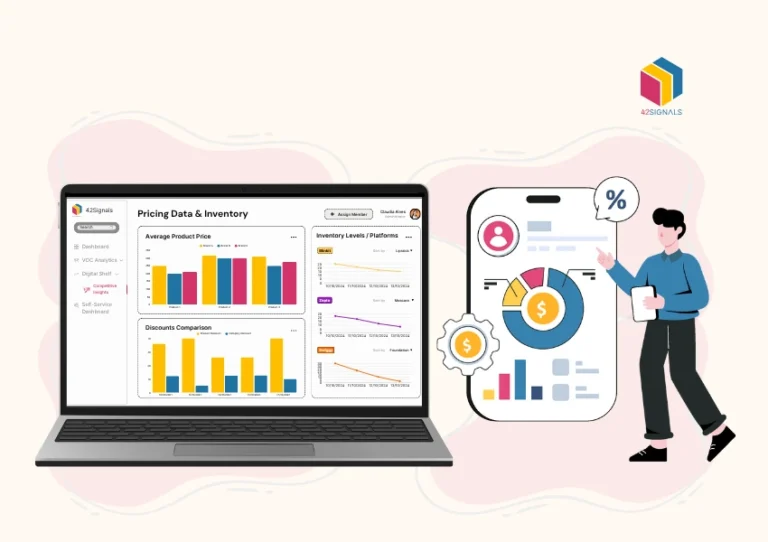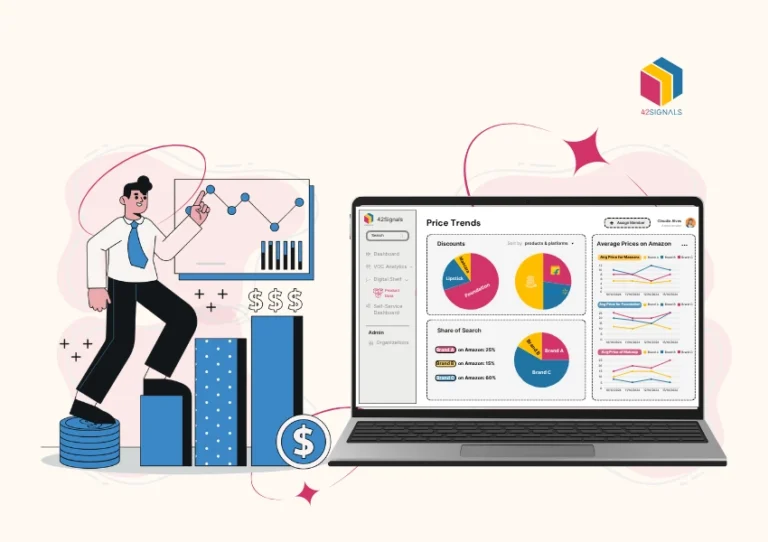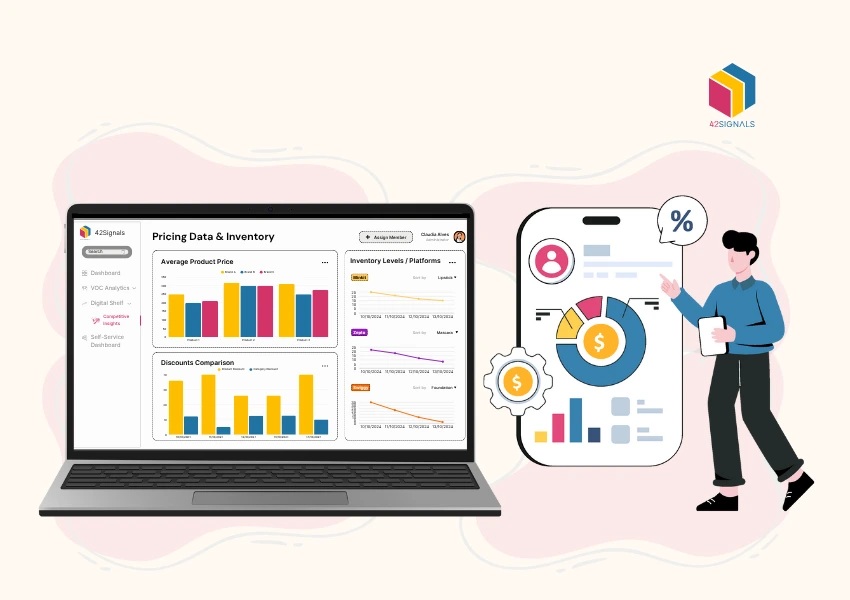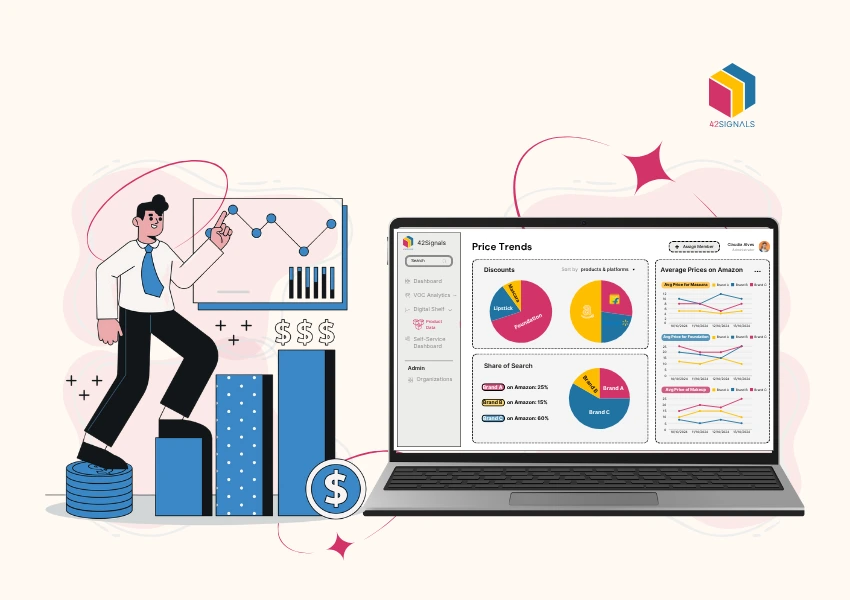Table of Contents
ToggleIn the realm of e-commerce, the significance of pricing transparency has grown exponentially. Many businesses are embracing this approach and leveraging digital shelf analytics to establish a solid foundation of trust and credibility with their customer base.
Pricing transparency refers to the level of openness businesses practice by clearly displaying the costs of their products and services. It can include details regarding cost components, pricing strategies, shipping costs, third-party integrations, and any other factors that influence the final price of a product or service.
An example of this adoption is shown in the image below. The costs for the delivery, platform fee, GST, and restaurant charges are clearly mentioned in the bill details, so the customer is aware of the bill breakup.

Image Source: Swiggy
In the current digital landscape, consumers are empowered with unprecedented access to a wealth of information, enabling effortless price comparisons and the pursuit of optimal bargains. In response, enterprises find themselves compelled to embrace pricing transparency as a crucial strategy for sustained competitiveness and the preservation of unwavering customer allegiance.
In this article, we’ll look at the multifaceted role of pricing transparency, its advantages and hurdles, and how the use of digital shelf analytics can be a boon to businesses.
The Benefits of Pricing Transparency
Pricing transparency – openly disclosing costs, fees, and the rationale behind pricing decisions – is rapidly shifting from a “nice-to-have” to a critical business imperative. While the initial draft rightly highlights core advantages like trust and competition, the full spectrum of benefits extends deeper, impacting customer behavior, operational efficiency, and long-term brand resilience. Let’s delve into these advantages in greater detail.
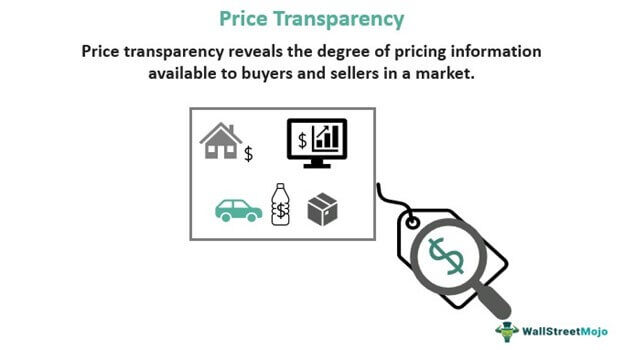
Image Source: WallStreet Mojo
Building Trust & Credibility with Digital Shelf Analytics
The assertion that transparency builds trust is fundamental. In an era saturated with marketing messages and plagued by hidden subscription fees, drip pricing, and unexpected surcharges, consumers are deeply skeptical. A clear, upfront pricing structure cuts through this noise. It signals that a company respects its customers enough to be honest and has nothing to hide.
Mitigating Negative Sentiment: When customers discover hidden fees post-purchase, frustration boils over into negative reviews, social media complaints, and customer service escalations. Proactive transparency significantly reduces these damaging interactions, protecting brand sentiment and saving resources on damage control.
Reducing Perceived Risk: Hidden costs are a major source of perceived risk for buyers. Transparency alleviates this anxiety. Knowing the total cost upfront allows customers to evaluate the purchase objectively within their budget, reducing cart abandonment often caused by sticker shock at checkout (as illustrated by the Swiggy example). This is crucial for high-value purchases or complex services.
Fostering Long-Term Relationships: Trust isn’t built overnight; it’s earned consistently. Transparent pricing is an ongoing demonstration of integrity. Customers who feel treated fairly are far more likely to become repeat buyers and vocal advocates. They transition from transactional relationships to loyal patrons who believe in the brand’s values.
Encourages Competiton
The point about transparency encouraging competition is profound. When prices are opaque, companies can obfuscate value and rely on inertia or confusion to maintain margins. Transparency disrupts this.
Empowering Informed Choice: Transparency empowers consumers to vote with their wallets based on their specific priorities (lowest cost, best value, specific features, brand ethics). This efficient market allocation rewards companies that truly understand and meet customer needs.
Leveling the Playing Field: It allows consumers to make meaningful comparisons. They can assess not just the base price, but the total cost of ownership (including fees, shipping, potential add-ons) and the corresponding value proposition (quality, features, service) across competitors. This forces businesses to compete genuinely on value, not just marketing hype or hidden cost structures.
Driving Innovation & Efficiency: To compete effectively in a transparent market, companies cannot solely rely on price cuts (which erode margins). Instead, they are pushed to innovate – improving product quality, enhancing service offerings, streamlining operations to reduce costs sustainably, or developing unique features that justify a premium. This ultimately benefits the entire market and consumers receive better products and services.
Improves Customer Experience
Hidden pricing structures can be confusing and irritating to the consumer. Taking the above Swiggy example perfectly encapsulates how hidden fees poison the customer experience. Transparency with digital shelf analytics is a powerful antidote.
Reducing Support Burden: A significant portion of customer service inquiries relate to billing confusion or unexpected charges. Transparent pricing drastically reduces these inquiries, freeing up support teams to handle more complex issues and improve overall service quality. Model as an example, if the company decided not to show clear cost breakups and directly added the surplus charge of Rs. 113, the customer would be clueless and annoyed by this cost increase at checkout. By disclosing this information, the user understands what the charges are and can compare prices on Zomato or other applications, helping them find the best value for their money.
Eliminating Friction & Frustration: The cognitive load of deciphering complex pricing, anticipating hidden charges, or experiencing checkout shock creates significant friction. Transparent pricing simplifies the decision-making process. Customers feel in control, knowing exactly what they are paying for and why. This reduces frustration and abandonment.
Enabling Confident Decision-Making: When costs are clear, customers can confidently evaluate if a product or service fits their needs and budget. They aren’t left feeling tricked or resentful after the fact. This leads to higher satisfaction with the purchase itself, even if the price is higher than a competitor’s base price, because the value is understood up front.
Personalization & Value Perception: Transparency allows companies to justify pricing tiers more effectively. Explaining the cost drivers behind different options (e.g., “Premium tier includes 24/7 support and advanced analytics, hence the higher cost”) helps customers self-select the option that provides the best value for them. This clarity often increases the perceived value of higher tiers rather than deterring customers.
Enhances Brand Reputation
A reputation for honesty is invaluable, and pricing transparency with digital shelf analytics is a cornerstone of that reputation.
Attracting Ethically-Minded Consumers: A growing segment of consumers prioritizes ethical business practices. Transparent pricing aligns strongly with values like honesty, fairness, and respect for the customer, making the brand more appealing to this influential group.
Differentiation in a Crowded Market: In industries rife with hidden fees (like telecom, airlines, banking, or event ticketing), a company known for clear, honest pricing stands out starkly. This becomes a powerful Unique Selling Proposition (USP), attracting customers weary of being nickel-and-dimed.
Cultivating Brand Advocates: Customers who trust a brand become its most powerful marketers. They are more likely to leave positive reviews, recommend the company to friends and family, and defend it against criticism. This organic word-of-mouth is far more credible and impactful than traditional advertising.
Crisis Resilience: Companies with a long-standing practice of transparency build a reservoir of goodwill. If a pricing change is necessary (e.g., due to increased input costs), communicating the reasons openly and honestly is more likely to be met with understanding rather than outrage. Customers feel like informed partners, not victims.
Driving Operational Efficiency with Digital Shelf Analytics
The advantages of pricing transparency aren’t solely external; they significantly impact internal operations:
- Streamlined Sales & Support: Sales teams spend less time explaining complex pricing or dealing with objections about hidden fees. They can focus on demonstrating value. Support teams face fewer billing disputes, allowing them to prioritize genuine product or service issues.
- Data-Driven Pricing Strategy: Transparent pricing necessitates a clear understanding of your own cost structure and value proposition. This forces internal discipline. Analyzing how customers respond to clear pricing tiers provides invaluable data for refining offerings, identifying profitable segments, and optimizing future pricing strategies.
- Improved Internal Alignment: When pricing is transparent internally as well as externally, departments like marketing, sales, product development, and finance operate with a shared understanding of the value proposition and cost drivers. This fosters better collaboration and strategic decision-making.
- Reduced Risk of Regulatory Scrutiny: Regulators worldwide are increasingly focusing on “drip pricing” and hidden fees as unfair or deceptive practices (e.g., the FTC in the US, the CMA in the UK). Proactive transparency helps companies stay ahead of potential regulations and avoid costly fines or reputational damage from enforcement actions.
Challenges of Pricing Transparency
Complex Pricing Structures
For businesses that involve complex pricing structures, transparency can be more challenging than a simple price breakdown. This may pertain to industries such as telecommunications or financial services that can be inherently complicated and interlinked with several other parties. With this obstacle, companies may struggle to communicate effectively, which can lead to mistrust.
Dynamic Pricing Structures with Digital Shelf Analytics
Several businesses like Amazon and Flipkart, include dynamic pricing strategies that involve adjusting prices based on market demand in real time. The obvious challenge in this area would be communication – how to let the consumer know the price variations and maintain transparency? It’s a tough pickle wherein the company must balance the need for flexibility and its requirement to provide clear and concise information to customers.
Balancing Transparency with Confidentiality
While pricing transparency is essential, businesses must also protect their competitive advantage. They may need to strike a balance between transparency and confidentiality, ensuring that sensitive information remains protected while still providing enough detail to satisfy customer demands for clarity.
Discrepancies in Platforms
Price discrepancies are a major challenge for brands that have products across multiple marketplaces, usually sold by a variety of sellers. This may require mandating consistent pricing across all platforms, which poses hurdles when considering different commission structures and operational costs, not to mention instances when MAP violations occur that may present more complications.
While all of these challenges are real and require further thought, brands may have to choose between what data they can actually provide and what cannot be disclosed. Complete transparency cannot exist for all businesses.
This may mean choosing a few pieces of information that can be shared which can add value to the customer. Even a little information can present helpful insights for the buyer and help them understand the costs better.
The Use of Digital Shelf Analytics
Digital shelf analytics can be a boon to businesses looking to tackle pricing transparency issues, as it provides valuable insights into their product listings and pricing strategies. By analyzing data on MAP violations, competitor activity, and product availability, companies can make the right decisions that promote transparency. Here are a few ways how –
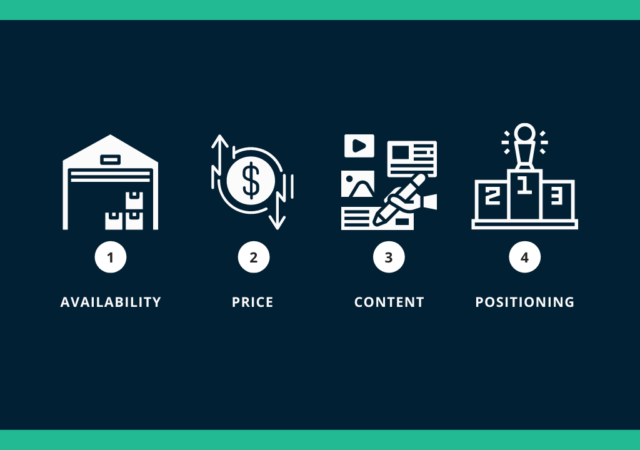
Image Source: Netrivals
Maintaining Price Elasticity
Analyzing customer behavior and sales patterns helps businesses determine the optimal price range for their products. Price elasticity refers to identifying the level of cost fluctuations your product can incur based on changes in demand.
This can mean discerning the right prices for the right platforms, establishing the minimum selling price, and using that to communicate transparently with customers across marketplaces. Digital shelf analytics provides platform-specific data and informs brands when breaches occur.
Track Competitor Activity
Most insights and the right business decisions are usually derived from competitor activity and monitoring their strategies. It allows businesses to understand what’s happening in the marketplace and in their industry to make the right calls.
With digital shelf analytics, companies can automatically track their rivals’ activities and adjust their pricing strategies that are in accordance with market standards. This paired with pricing transparency provides creates trust as customers know they are not being overcharged by a specific brand and see the costs involved to make the purchase.
Detecting Price Discrepancies with Digital Shelf Analytics
Saving the best for last, digital shelf analytics platforms can help detect price discrepancies across multiple platforms. This helps maintain consistency and avoid confusion among customers. Minimum advertised price (MAP) violations occur when authorized or unauthorized sellers go below the agreed-upon amount. This has massive repercussions, as a customer may feel cheated on seeing a lower price elsewhere while finding a higher price at authorized places.
Conclusion
Authenticity and transparency is a requirement of the modern customer. Consumers connect more with brands that display these traits and do not display tendencies of being a soulless corporation.
To work with new-age customers, businesses must adapt to their ways and operate in a manner that exudes these values. Pricing transparency is a step in the right direction as it promotes credibility and accountability in the eyes of consumers. These measures, when implemented well, can help a brand stand out from the noise and make the right impression on its target audience.

